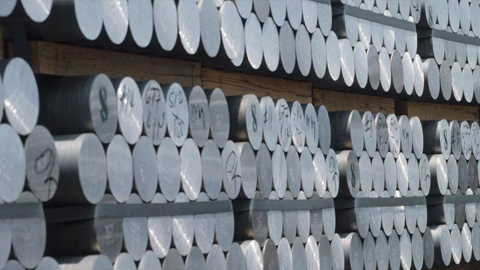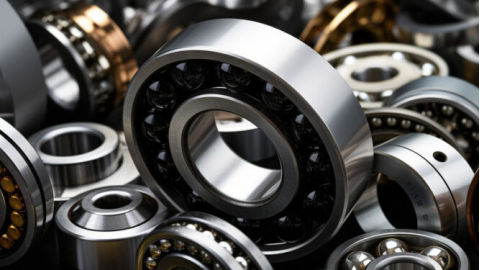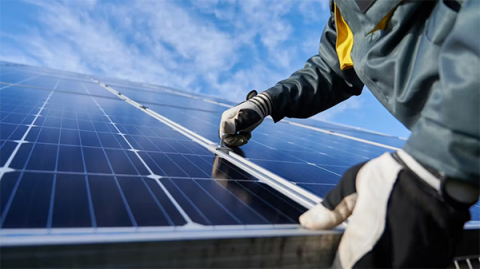Top 10 Semi-Finished Products Factory in China

Industry Overview and Standards
The semi-finished products sector in China is a cornerstone of global manufacturing. This industry covers metal processing, plastic molding, electronic components, and building materials. Leading factories in China meet strict standards. They have an annual production capacity of over 500,000 metric tons. They are ISO 9001 certified. They possess in-house R&D capabilities and hold at least three core technology patents. More than 30% of their output is for export. Their client lists include Fortune 500 companies. They also meet China's National Green Factory standards for environmental protection. The industry is moving towards smart manufacturing, customized services, and green production.
Top metal Semi-Finished Product Manufacturers
China's metal processing sector is world-class. Baowu Steel operates advanced production lines for automotive high-strength steel. Their products have a tensile strength exceeding 1500MPa. CITIC Special Steel specializes in high-end bearing steel. Their products have a service life that is 30% longer than international standards. Nanshan Aluminum has a certified system for aerospace aluminum materials. They hold certifications from both Boeing and Airbus. These factories use advanced processes like continuous casting and rolling and precision quenching. They maintain product tolerances within ±0.05mm.
Plastic and Chemical Semi-Finished Product Experts
The plastic and chemical sector is a leader in innovation. Kingfa Science and Technology has a modified plastics production line. Their annual capacity reaches 1 million metric tons. Wanhua Chemical produces MDI preforms. Their products have UL94 V-0 flame retardant certification. Rongsheng Petrochemical manufactures PTA intermediates. Their products achieve a purity level of 99.99%. These companies use core technologies like injection molding, extrusion molding, and reaction injection molding. Their products are critical for the automotive and home appliance industries.
Electronic Component Manufacturing Leaders
China is a global hub for electronic semi-finished products. BOE uses vacuum deposition technology for OLED display modules. Their products achieve a pixel density of 500 PPI. Luxshare Precision employs injection molding for connectors. Their process has an accuracy of 0.01mm. Goertek specializes in MEMS sensor packaging. Their production line yield exceeds 99.5%. These factories operate cleanrooms that meet Class 1000 standards. They use automated inspection systems and rigorous reliability testing protocols.
Comprehensive Manufacturing Giants
Some Chinese manufacturers lead through vertical integration. Haier Smart Home has integrated stamping production lines. They achieve a production rhythm of 60 parts per minute. Gree Electric specializes in processing core components for compressors. Their products have an energy efficiency ratio above 4.5. Midea Group uses SMT placement technology for smart controllers. They achieve precise placement of 01005 components. Their strategy focuses on modular supply and full-process control.
Technological Innovation and R&D Capability
Top factories invest heavily in research and development. Their average R&D investment is 3-5% of total sales revenue. They operate national-level laboratories and post-doctoral workstations. They often establish joint labs with top universities like Tsinghua University. Key innovations include Shandong Weiqiao's liquid metal forming technology. Hengli Petrochemical has developed integrated technology for aromatics complex units. Sany Heavy Industry has made breakthroughs in precision casting for hydraulic components. These companies are also adopting digital twin factories and AI-powered quality inspection systems.
Global Market Layout and Supply Chain
Leading Chinese manufacturers have a strong global presence. They establish production bases in strategic locations like Southeast Asia and Mexico. They maintain extensive global warehousing networks, with an average of 15 overseas warehouses. They form strategic logistics partnerships with companies like Maersk and COSCO Shipping. To navigate trade challenges, they use tactics like production diversification and tariff optimization. They build local service teams to support international clients. Their supply chain is resilient, using multi-source procurement and real-time monitoring systems.
Sustainable Development Practices
Environmental responsibility is a key focus for top factories. Their energy consumption index has dropped to 0.3 tons of standard coal per CNY 10,000 of output value. They achieve a water recycling rate of over 95%. Their waste resource utilization rate exceeds 90%. Baosteel uses hydrogen-rich carbon recycling oxygen blast furnace technology. Conch Cement operates carbon capture and utilization projects. LonGi Green Energy Technology has committed to the RE100 green power initiative. These companies are actively improving their ESG ratings and working towards carbon neutrality.
Procurement Guide and Future Outlook
Selecting the right supplier requires a clear framework. Assess quality by checking for IATF 16949 certification. Analyze cost structures, where raw materials typically account for 60-70% of the total cost. evaluate delivery capabilities; top factories respond to orders in less than 24 hours. Ensure they provide technical support teams for on-site problem-solving. The industry is evolving rapidly. By 2025, smart factory penetration is predicted to reach 70%. Customized products will make up 50% of output. The circular economy model will become standard. Procurement managers should prioritize partners with strong digital delivery capabilities and transparent carbon footprint tracking systems.




